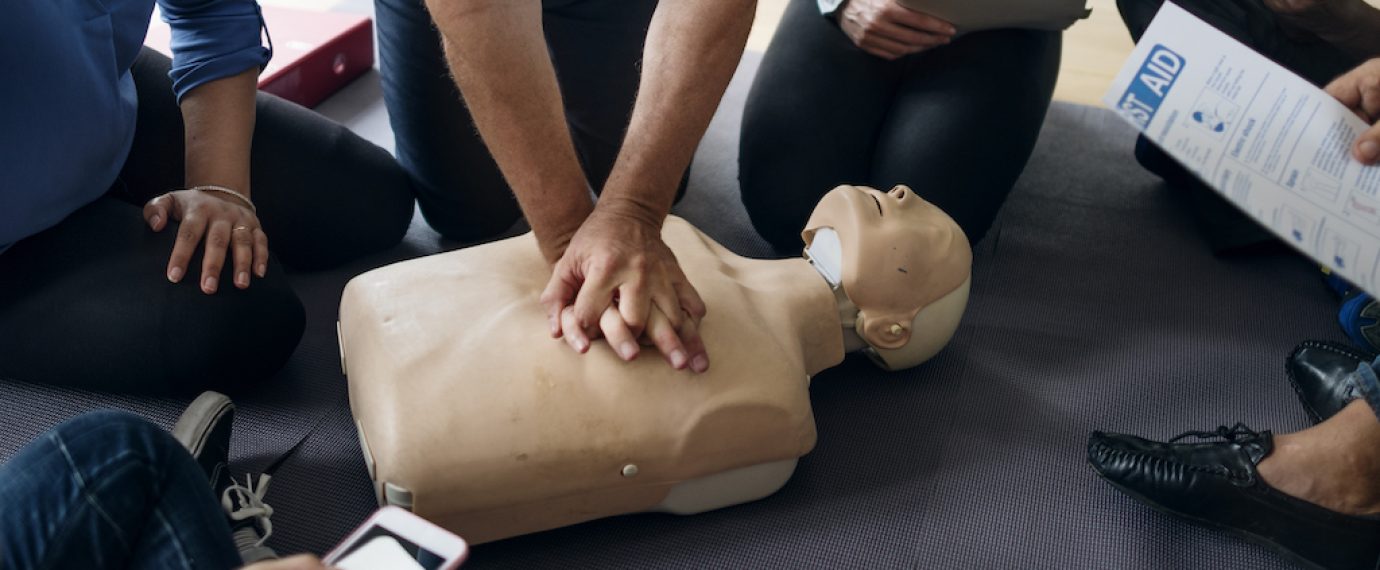While most work in the health and safety field focuses on injury prevention, every facility needs a plan if and when injuries do occur. Preparing to help employees in situations where things go wrong is a critical aspect of a comprehensive safety & health program. First aid, cardiopulmonary resuscitation (CPR), and automated external defibrillator (AED) training allow a quicker onsite response to an emergency, which can help to prevent injuries from worsening. It’s important to understand first aid treatment and the associated training requirements to create and maintain a safe environment at your facility and remain compliant with Occupational Safety and Health Administration standards.
First aid training and the certification process gives employees the necessary information, skills, and confidence to help others during emergency situations. This training class will only take a few hours and can make a significant difference in assisting someone experiencing a medical emergency. According to the National Safety Council, 70% of heart attack-related deaths occur before reaching the hospital. In the midst of medical emergencies, every second counts, and having a team on-site that has been trained in First Aid/CPR/AED can make a world of difference.
First Aid Training and Regulatory Compliance
First Aid/CPR/AED training also has implications for regulatory compliance, as seen in 29 CFR 1910.151 (b), which states, “in the absence of an infirmary, clinic, or hospital in near proximity to the workplace which is used for the treatment of all injured employees, a person or persons shall be adequately trained to render first aid. Adequate first aid supplies shall be readily available.” This provides employers the option to have a member of the workforce trained in First Aid/CPR/AED. This option, for most employers, is a feasible and low-cost way to protect employees while remaining compliant with regulatory standards. OSHA recommends, but does not require, that every workplace include one or more employees who are trained and certified in first aid and cardiopulmonary resuscitation (CPR).
While OSHA standards do not specifically address AEDs, they do recommend that CPR training be a general program element of a first aid program. Some OSHA standards, like logging operations (29 CFR 1910.266), permit-required confined spaces (29 CFR 1910.146), and electric power generation, transmission, and distribution (29 CFR 1910.269), for example, have specific requirements that employees be trained in first aid and CPR. If an employer is covered by one of these specific standards, CPR training is required.
Under 29 CFR 1910.146: Permit-required Confined Spaces, employers are required to train affected employees in basic first aid and cardiopulmonary resuscitation (CPR), as well as ensure that at least one member of the rescue team or service who holds a current certification in both areas is available. In 29 CFR 1910.269: Electric Power Generation, Transmission, and Distribution, there are clearer instructions on how many first aid-trained people should be available, depending on when and where the work is taking place. When employees are performing work on or are associated with exposed lines or equipment energized at 50 volts or more, the requirements for compliance are as follows:
- For fieldwork involving two or more employees at a work location, at least two trained people must be available.
- For line-clearance tree trimming performed by line-clearance tree trimmers who are not qualified employees, only one trained person needs to be available if all new employees are trained in first aid within three months of their hiring dates.
- For fixed work locations such as substations, the number of trained persons available shall be sufficient to ensure that a trained person can reach each employee exposed to electric shock within four minutes. If the existing number of employees is insufficient to meet this requirement, each employee at the work location shall be a trained employee.
In addition to training for First Aid/CPR/AED, the bloodborne pathogens standard at 29 CFR 1910.1030(g)(2) requires employers to provide training to any employees who have occupational exposure to blood or other potentially infectious materials. This includes employees assigned medical or first aid duties by their employers.
How to Complete First Aid Training in Your Facility
There are many easy and comprehensive options available to complete this training. Some of these options may include:
- Traditional On-site Class: This option provides an ideal training solution for workplaces that want or are required to learn how to respond to medical emergencies with in-person training content and skills verification. This option will include an on-site class and skills verification with an instructor, associated equipment, and a certification.
- Blended Learning Course: This option is the perfect combination of online content and in-person skills sessions that make scheduling and administering your First Aid, CPR, and AED compliance training easy.
- Remote Skills Verification: This option is the perfect combination of cognitive learning with flexible and remote skills verification guided by a live, authorized instructor. This option will include a live online course and equipment to perform the skills verification.
Training your employees doesn’t need to be difficult. U.S. Compliance offers comprehensive training in all three of these formats. If you are interested in training or need assistance identifying if training is required at your site, contact U.S. Compliance.



